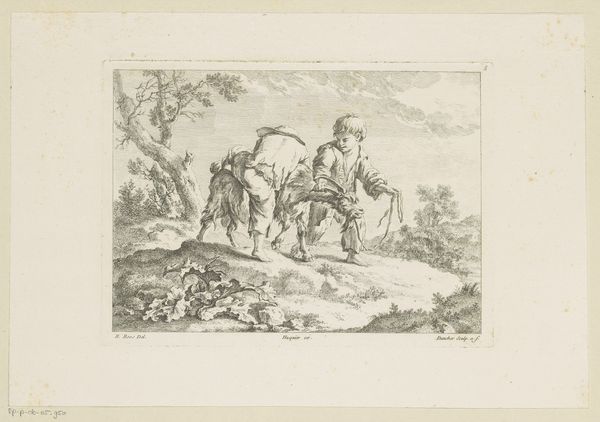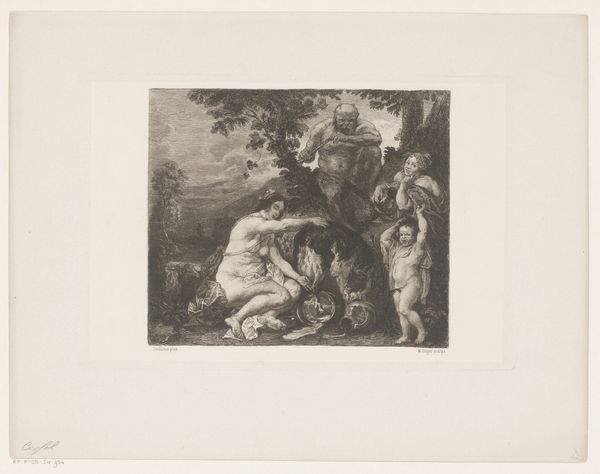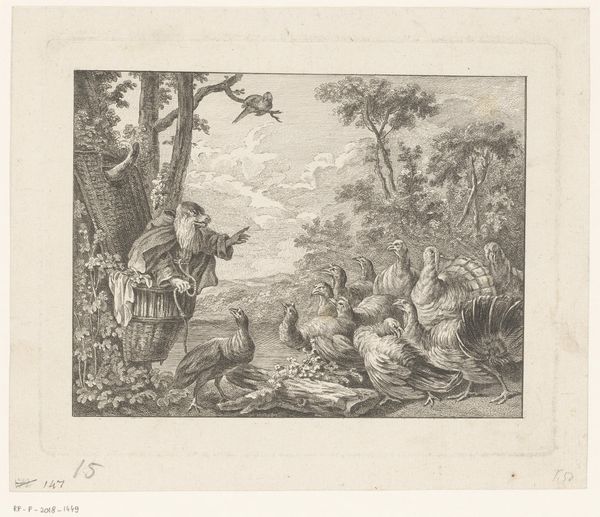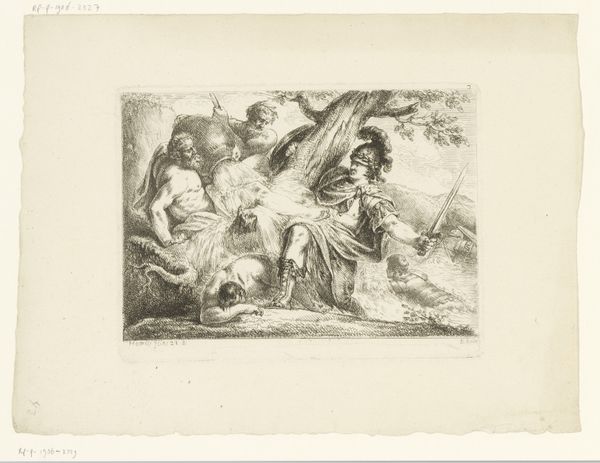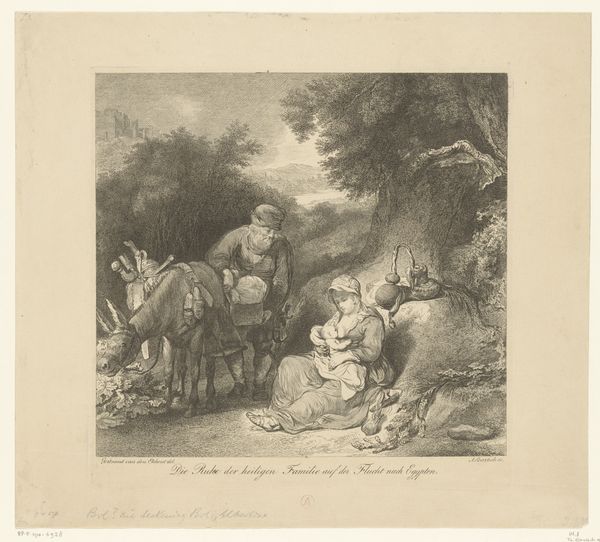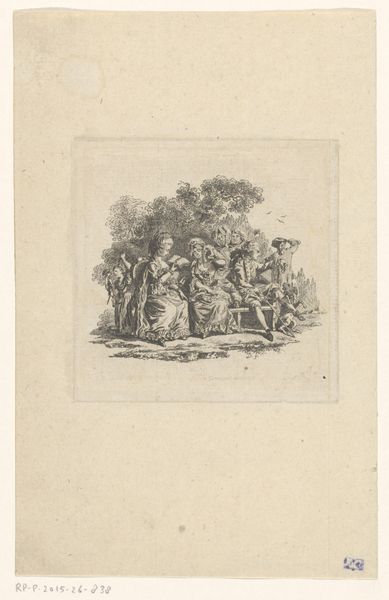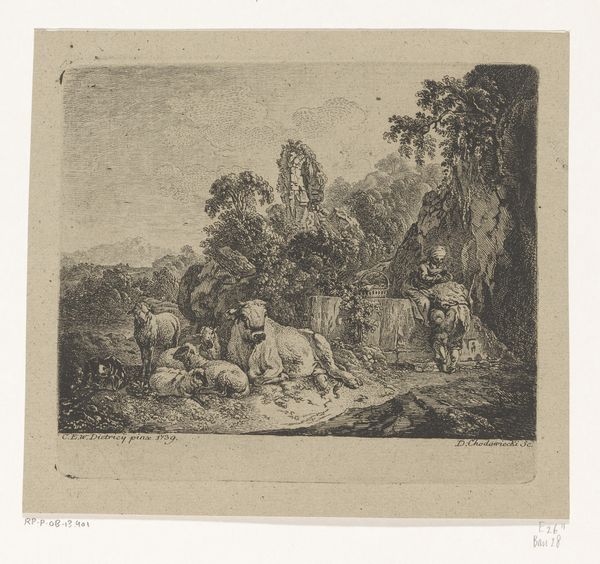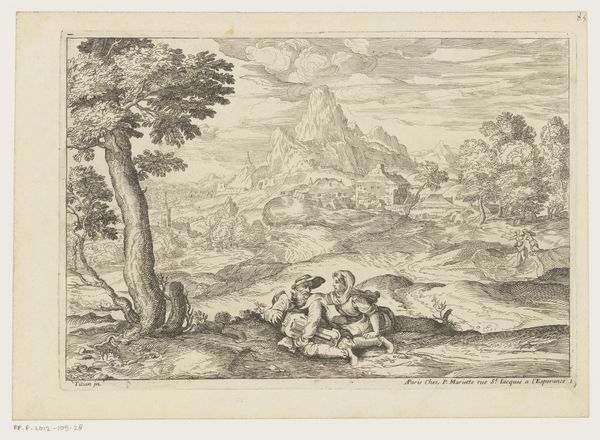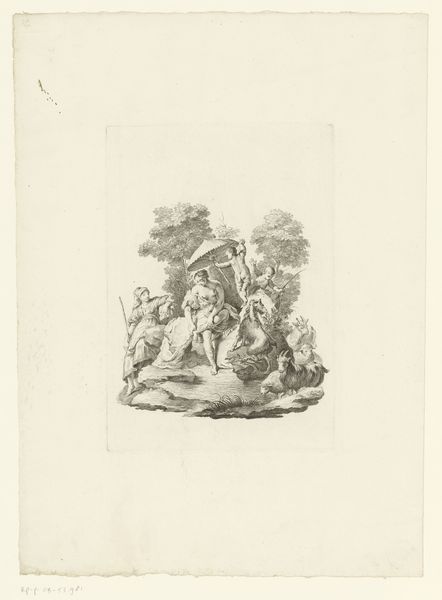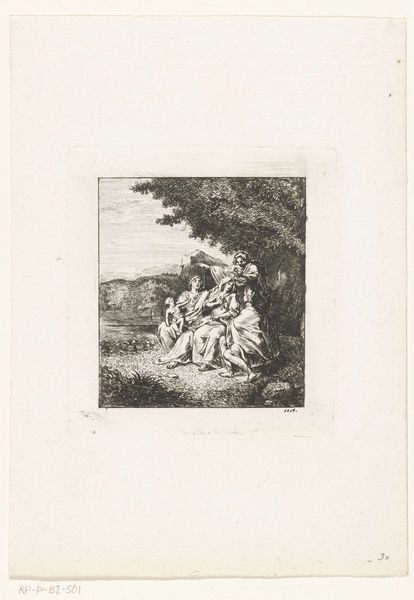
Vrouw met doedelzak en dansend kind omringd door schapen en een hond 1769 - 1772
0:00
0:00
balthasarantondunker
Rijksmuseum
print, etching
#
narrative-art
# print
#
etching
#
old engraving style
#
landscape
#
etching
#
figuration
#
child
#
genre-painting
#
rococo
Dimensions: height 179 mm, width 250 mm
Copyright: Rijks Museum: Open Domain
This etching, made by Balthasar Anton Dunker, depicts a woman with a bagpipe and a dancing child, surrounded by sheep and a dog. The image evokes a romanticized vision of rural life, a theme that gained popularity in Europe during the 18th century. Dunker was working in Switzerland during the late 1700s, a period marked by significant social and political change. Enlightenment ideas about the value of the individual and the importance of nature were gaining traction, challenging traditional aristocratic values. The image reflects a growing interest in the lives of ordinary people. By depicting a humble scene of music and dance, Dunker subtly questions the rigid social hierarchies of his time. The presence of classical ruins in the lower-left of the image add to the political message, connoting the end of the Roman Republic and the rise of Imperialism. As art historians, it's our job to uncover these hidden layers of meaning, drawing on sources from the period to understand the artwork's place within its specific cultural and institutional context.
Comments
No comments
Be the first to comment and join the conversation on the ultimate creative platform.
